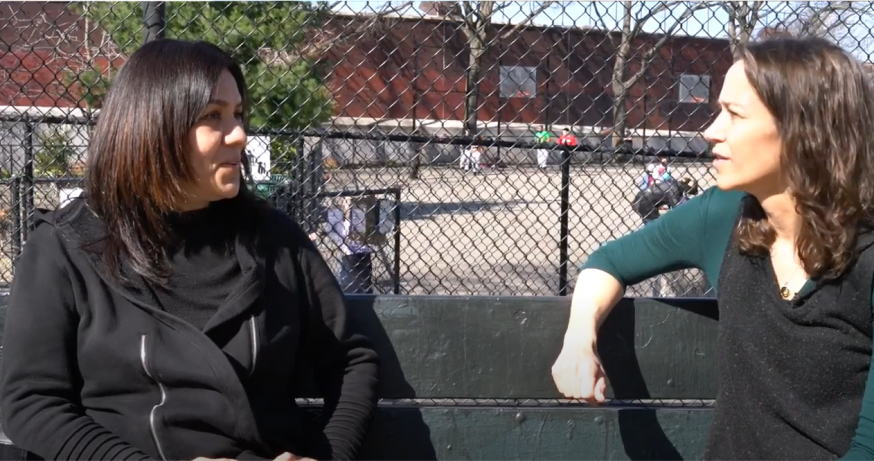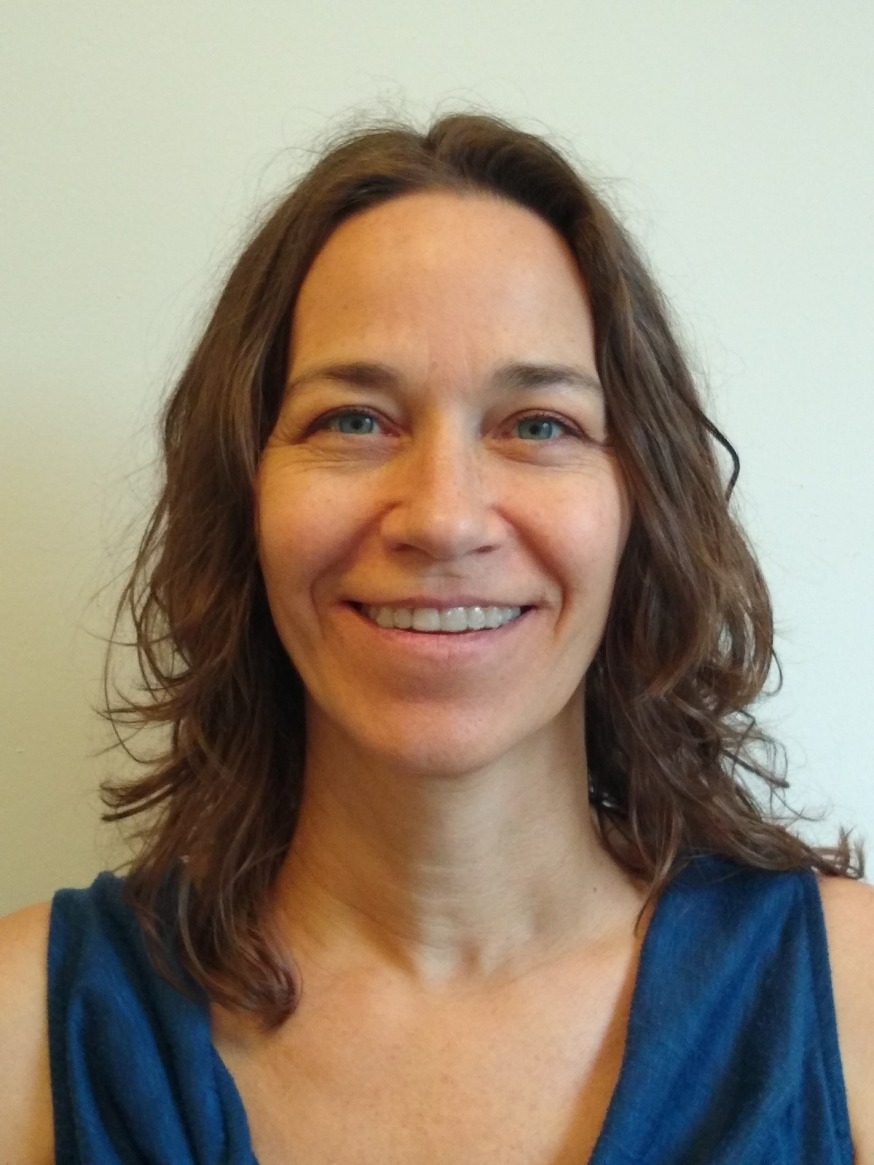
District 26 City Council Candidate (right) Emily Sharpe speaking to a Sunnyside resident at Lou Lodati Park. (Photo: Emily For City Council)
June 10, 2021 Op-Ed By: Emily Sharpe
I met Alicia Boyd in Brooklyn at a meeting to save the Brooklyn Botanic Garden’s flora from dark shadows cast by luxury towers. I had gotten a flyer to attend from her colleague when he toured Sunnyside Yards at an event sponsored by the group I founded, “Stop Sunnyside Yards”.
What compelled me to travel to Crown Heights on a hot summer night was my incredulity that a rezoning was about to be approved that would purportedly kill 50% of the plant collection in a garden that I had enjoyed through the years.
Perhaps like most people, there was a time when I thought our built environment was entirely dependent upon the whims of powerful developers who decided when, how and where they chose to build. Now I know it is, in fact, our government that determines what happens with our land – even private property – and it can choose to regulate land-use for many different reasons.
Sometimes it’s so an odiferous pig farm can’t coexist with a retirement village. But sometimes, like now, it’s to allow developers with easy access to international financial capital to build virtually unchecked in every neighborhood in New York City. (To be discussed another time…) In a nutshell, this is “The Comprehensive Plan” (Intro 2186) – a citywide Master Plan that is currently winding its way through community boards and is scheduled to be discussed further in the early fall.
City Council Speaker Corey Johnson introduced this bill in December 2020 on the same day a citywide group gathered at city hall to implore Mayor Bill de Blasio and NYC Council members to stop approving rezoning plans that have occurred at an accelerated pace over the past 15 years, causing skyrocketing rents and displacement of residents and small businesses.
By February 17, 2021, Tom Angotti, a well-respected expert on Urban Policy & Planning, had largely discredited the plan as being too top-down and developer-driven, similar to current planning; and I was a panelist on a virtual workshop discussing the dangers of the plan.
At its core, this plan is a power-grab by the Executive Branch, giving control over land-use to the mayor instead of individual council members and the community they represent. Furthermore, this plan would force every community district in the city to engage in one of three 10-year development plans that a mayor’s commission would create for us after just one public hearing!
The borough president, community board, and a newly formed steering committee would each cast their non-binding vote for one of the three options. Afterwards, city council would hold one additional public hearing and make its selection from the three. If, however, city council refuses to choose any of the options, the mayor’s commission would decide for it.

Emily Sharpe (Photo: Emily For City Council)
Imagine having to choose between three pre-determined plans as your only option for the community. Imagine asking yourself where new luxury high-rises would displace the fewest number of people or cause rents and property taxes to rise a little less. Imagine neighborhoods within your district competing with one another to be the one to resist more overcrowding and strain on its resources.
Should we build out Astoria or could Sunnyside stand a dozen more large-scale buildings? What about LIC – maybe they won’t notice.
With LIC being the fastest growing city in the nation and desired home to massive tech companies with virtually no additional infrastructure or rent protections, it’s easy to guess what’s in store for western Queens with this new plan.
We have our own gardens, residents and diversity to protect, but the next council member won’t be able to do that if the Comprehensive Plan passes.
At a rally in March, I spoke out against Corey Johnson’s plan and asked like-minded candidates from other districts to join me in a pledge to stop (or repeal) this plan once in office. This I promise to do if elected.
I will also stand up to the power players who want to see top-down planning to allow for more towers to benefit their portfolios, but don’t actually care about the people who live and work here.
Yes, I also want (and will work for) other things, like more green space, better public transportation, and education equity. But if we don’t save our city from big real estate, many of us may not even be here to enjoy them.
*Emily Sharpe is a Sunnyside resident of 23 years, public interest attorney & founder of Stop Sunnyside Yards. Sharpe is the only city council candidate in D26 to be given an “A” rating by Human-Scale NYC, an organization dedicated to stopping the influence of big real estate.
2 Comments






Remember to NOT rank/ NOT vote for Corey Johnson for Comptroller.
If I was a Democrat I’d vote for her. Good luck Emily hope you win.